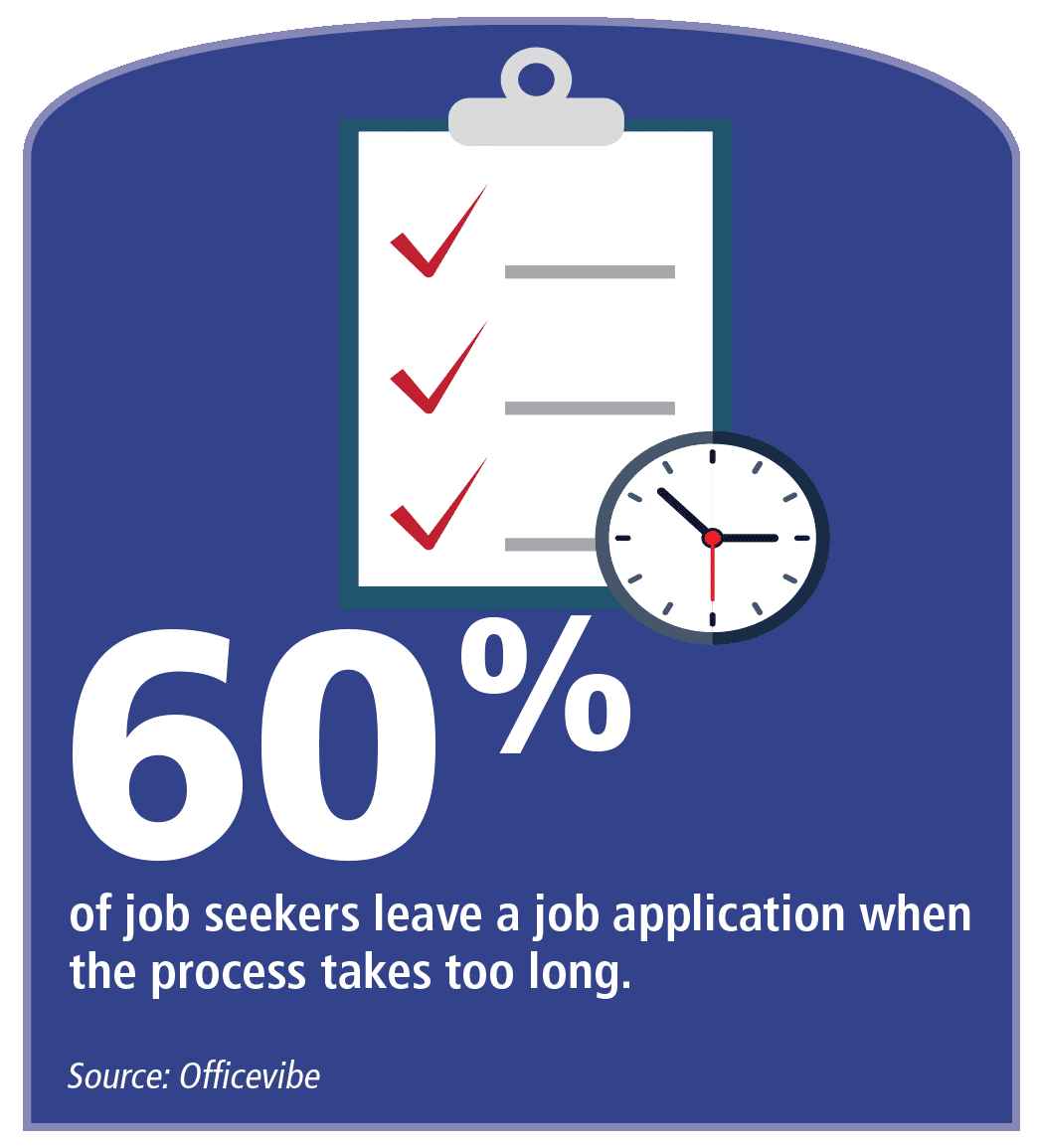Today’s technology is helping organizations hit high volume hiring targets.
By Debbie Bolla
Competition is known to drive change and in today’s talent market, this couldn’t be more true. With more jobs available than candidates looking for new roles, organizations need to rethink their approach to hiring. For those with high volume recruiting targets, the pressure for change is even greater, says Adam Godson, vice president of global technology solutions for Cielo, a strategic recruitment process outsourcing (RPO) partner. Long applications and outdated paper processes will no longer work with market competition.
“Today’s candidates are used to easy consumer-like experiences, so they will not tolerate long online job applications,” Godson explains. “Hourly hiring in particular is about speed and they will just leave.” And recent research agrees: Officevibe finds that 60 percent of job seekers leave a job application when the process takes too long.
A large amount of candidate drop-off can be detrimental for an organization looking to hit high volume goals, says Godson. But good news: It’s easily avoidable.
First, organizations should start with an analysis of the candidate experience, including process and journey mapping to help determine what it should look like. Godson recommends analyzing the specific type of candidate information HR needs to make a decision for the next step. This can be done at each point in the hiring process.
 Godson explains: “One of the key things organizations do wrong is they collect way too much information at the beginning. Every single question HR asks costs the organization money. Think of it this way: Am I willing to pay thousands of dollars over time in order to get the answer to this question? If the answer is no, leave it off.”
Godson explains: “One of the key things organizations do wrong is they collect way too much information at the beginning. Every single question HR asks costs the organization money. Think of it this way: Am I willing to pay thousands of dollars over time in order to get the answer to this question? If the answer is no, leave it off.”
Godson challenges organizations to reconsider: Is it necessary to ask for multiple references or for a candidate’s last three employers? Will this help determine if a candidate is a good fit for an interview? If not, such questions should be removed, saving both the organization and the candidate time.
“Candidates can always fill in things along the way, and organizations can get it as they need it,” he says.
In the beginning of the process, Godson’s rule of thumb is to ask six questions that take less than seven minutes to answer on a mobile device. This should be key information that will determine whether or not the candidate is qualified to come in for an interview. Examples include:
- candidate location;
- very recent work experience;
- skills that match job requirements; and
- any necessary certifications.
For those candidates with qualifications that align with the role, organizations can leverage technology to allow candidates to schedule an interview within moments of application.
“Don’t wait to call them back for 24 hours. Don’t look at it for two days. Instead have the path automatically go to a scheduling platform and get them in at that moment,” recommends Godson.
In fact, Cielo research shows when using this approach, 95 percent of candidates will set an interview within three days of being asked and organizations experience a 30 percent better retention rate. And don’t miss out on closing the loop with candidates that aren’t qualified; A simple email can make a difference in the long run because they may be consumers as well, Godson says.














